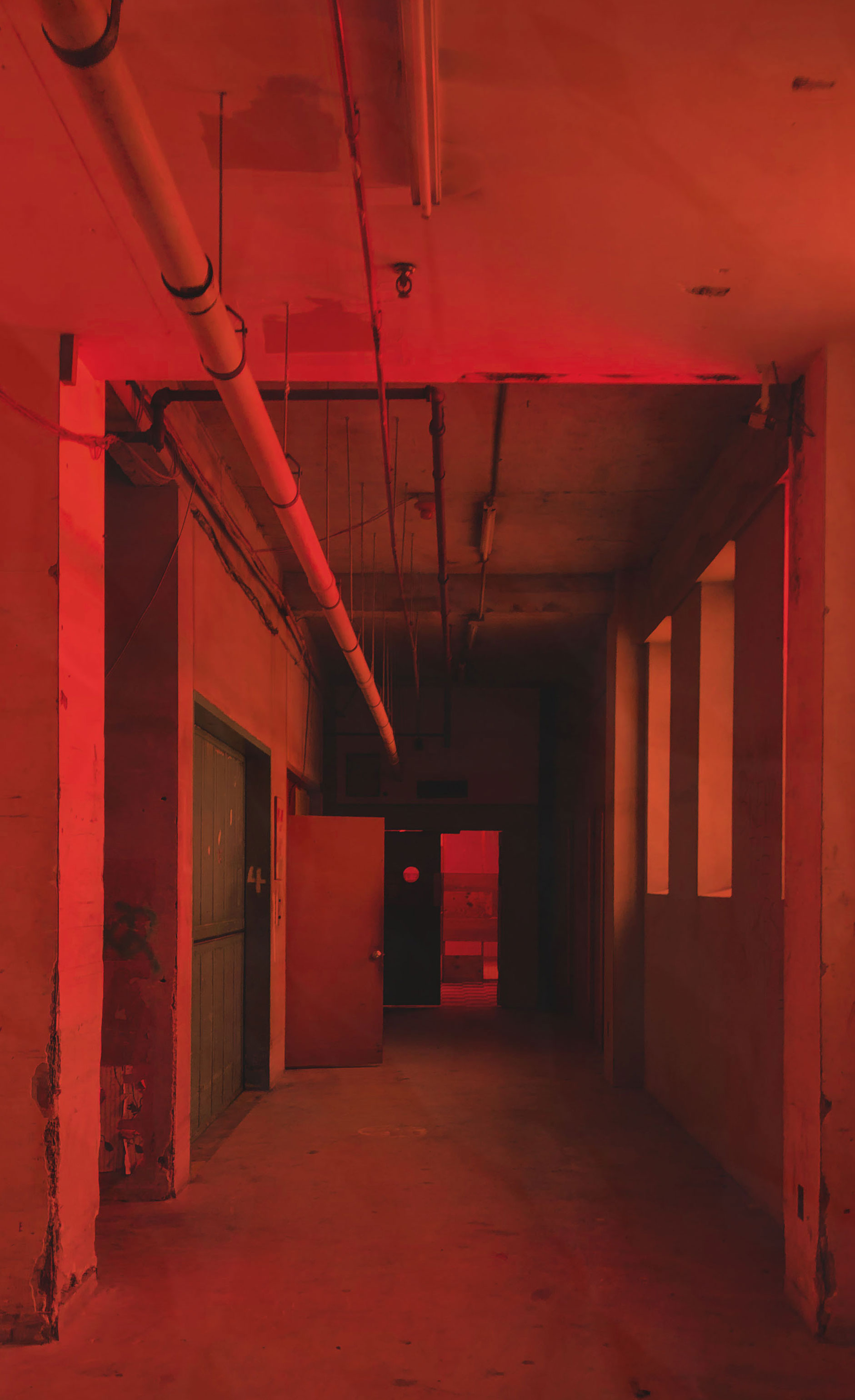
From December 5–9, RAW POP UP will transform an abandoned department store into a multisensory experience. Over the years, RAW POP UP has formed a collective of different creators with the purpose of cultivating a larger Interactive Art Movement. Next week, RAW POP UP will bring together more than 80 local and international creatives to fill the venue with an array of art forms including immersive installations and performances that will transport you to an alternate era. We sat down with eleven of the makers to discuss their work and how they will define and contribute to the theme of a department store from a lost era. Watch the teaser video for a peek and to experience RAW POP UP for yourself, purchase tickets here.
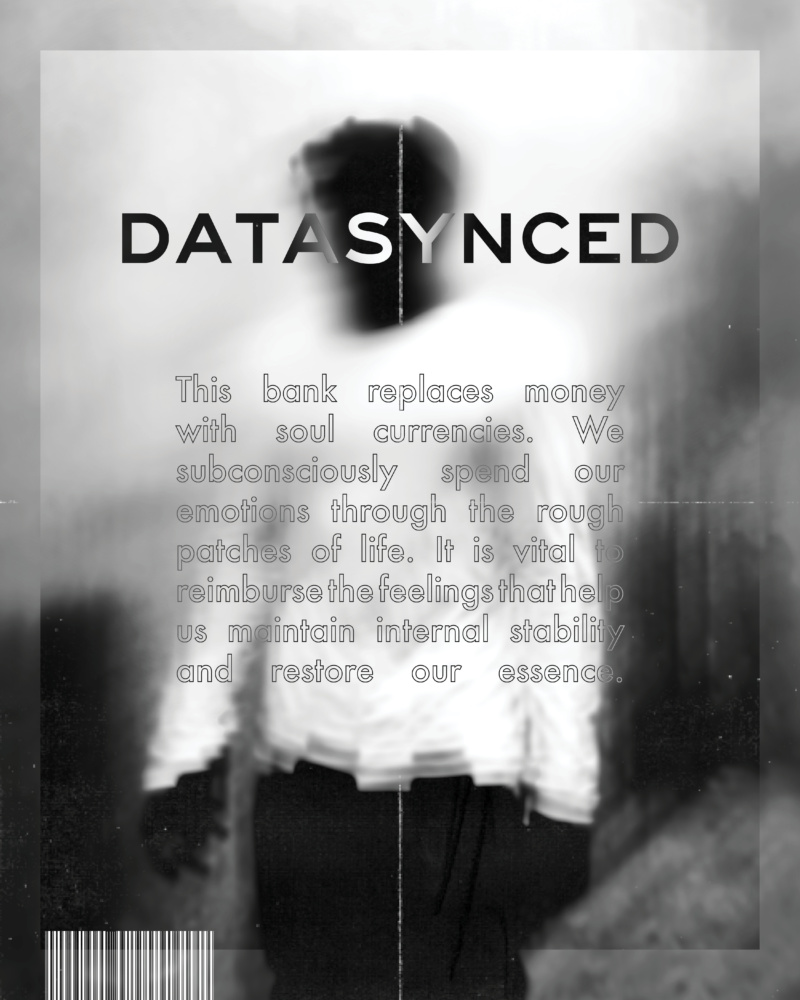
James Goodwin (Datasynced)
How important is social media and the rise of digital media in your art form? Without digital space and social media, I’m not sure my art form would exist. I find these platforms are most sensible for activations, social experiments, and interactive experiences, which contribute towards my efforts to emphasize fluidity, human connection and how immersed we are into two realities simultaneously. Today, we are able to reach from one, to hundreds of thousands, to millions of people through social media instantly. We are seeing social norms form and restructure right before our eyes through trends almost daily. These shifts have resulted from the rise of digital media and so it keeps me optimistic.
How do you think computers will influence art in the next century? I see artificial intelligence occupying a good percentage of the art world in the next century and having a revolutionary impact on how future generations create, perceive, and digest art. I consider the fact that computers are designed to execute tasks. Today, there are ongoing experimental efforts in this space and art produced by artificial intelligence in quite a few stories have been successful, which makes me curious about the evolution of these performances in the future. Think about the amount of memes and images out there, the amount of search results, the amount of YouTube videos, the amount of virtual pollution, the amount of virtual interactions between residual images of people and avatars, and then think about the new reality and perspective being created by this activity and the system you’re educating i.e. the computer. Now fast forward 50–100 years and add virtual emotional intelligence into the mix: computers taking what they have learned and painting synthetic perceptions of the then-current state of the virtual climate and the internet, because through machine learning, they have been educated on a reality human beings have created in an alternate space. We see glimpses of this through search engines being used in the present times now.
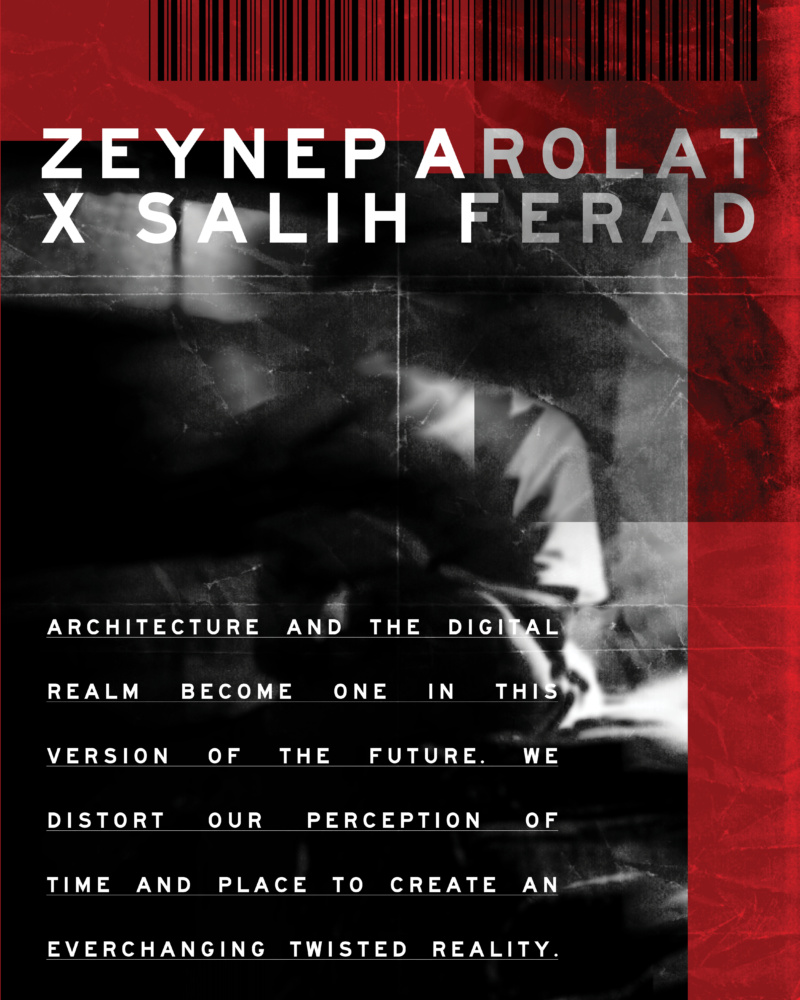
Zeynep Arolat x Salih Ferad
Who are some of your architectural influences? My biggest architectural influences are masters like Tadao Ando and Carlo Scarpa, who design very sensitively for each of their sites. Their architectural details are so delicate that they flirt with sunlight, water or with the sound of the wind. For me in space making, contextual situations should direct architectural moves so that there can be a real soul of the building/place.
How important are traditional art forms in your creative process? Traditional art forms were influential in their own time. Today in our mechanical age, the range of things we can do is infinite. With my partner Sali, by combining architecture and the digital realm, we try to learn from the past but create something “other” than what has existed. We believe that only then as creative minds we can question and criticize the present, for the sake of a better future.

Jane Quan x Florentine Ruault
How do your current projects reflect the increasing interconnectivity of society and the continual push for globalization? In today’s interconnected world, one’s identity has become synonymous with one’s ideas and ideals. Selfies and images are used to define and present our chosen identities to global audiences through the use of social media and digital web. We’ve imagined Charlie as a trans-human character with no race nor gender and as a potential canvas for the future generation. Charlie’s Electric Sheep hopes to put self- representations in perspective by juxtaposing digital imagery and human interaction. Our aim is to remind the viewers not to lose their values in the new age as we sit on the brink of the AI revolution. We are aiming to address these contemporary issues using art as an international language without geographical or cultural barriers.
How does the modern city scape affect art and interaction and in what way does your art separate the viewer from this reality? JQ: The static architecture that looms over us remains a constant reminder of modern civilization and pushes us to explore the many complex aspects of humanity through art. Through the use of digital tools, our installation separates the viewer from the ground they stand on and the buildings around them by being reactive to movement and interaction. It hopes to act as the fine line between the animalistic movements and behavior that we naturally engage in versus the new wave of trans-humanism that seeks to put that side of humanity aside. My art acts as a tool to define the two realities that we have been placed in as people, with digital elements that pay homage to the technology that has raised us and the use of our moving bodies as an undeniable part of our beings.
FR: Spending most of my life in Paris and London made me realize that infrastructures constituting modern cityscapes (transport/massive habitation buildings/businesses) are also responsible for the uniformization of these areas. I am aiming to offer alternative environment possibilities through my work by changing “the normalized” aesthetic of megacities. I integrate installations and sculptures in cityscapes, or landscapes, as triggers for interpersonal communication as well as invitations to interact or perceive a space differently from its origins. I also want to display and experience more artworks outside of the gallery space, since I firmly believe that art is a cultural and educational tool that would lose its value without an audience.
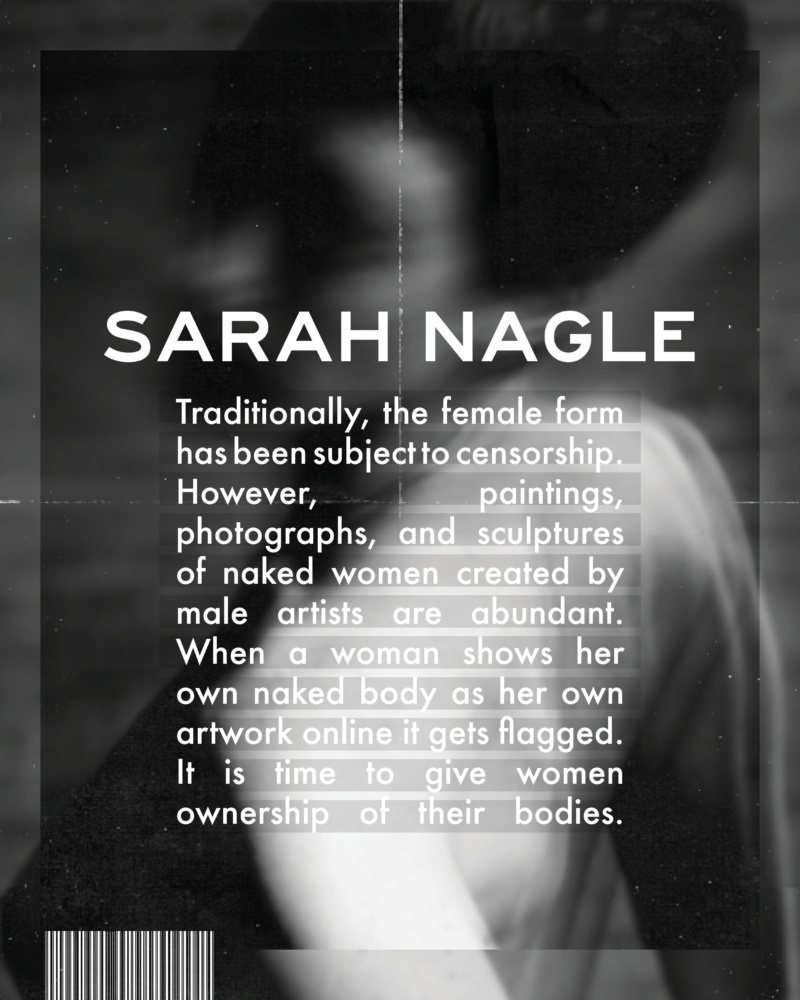
Sarah Nagle
What encourages you to dance? I’ve always danced, and my relationship with dance has served different purposes throughout my life. Right now, I’m encouraged to keep dancing because what else am I going to do? As a Trump-Era dance artist, I feel enormous responsibility to be a beacon of body liberation. Dance creation is what I can contribute to a collective evolution of consciousness.
In what ways has dance evolved in terms of gender roles and norms? For an abstracted art form concerning physical bodies in space, contemporary dance is surprisingly rigid about gender roles and norms. Of course, now we know that girls can lift boys and boys can wear pointe shoes. But, to me, simply reversing traditional gender roles is two-dimensional and heteronormative. Post-modernism brought us gender neutrality in costuming but kept us fixated on equally representing binary genders. We are limiting the progression of our art form by perpetuating the categorization of our bodies into male or female and by focusing on presenting equal parts “men” to “women” in performance.
Bodies carry archetypal meaning depending on race, gender, size, and varying abilities. When a body is used as a modality for art through dance, the audience projects familiar archetypal narratives onto the dancers. Kyle Marshall opened my eyes to this concept with his work Colored, which questions the role of bodies of color in an abstracted, post-modern, white dance world. As a community, we can’t begin to shift the audience’s experiences of our bodies without shifting how we talk about gender in dance. There’s no such thing as “male dancers” and “female dancers.” We are all dancers, and we should all be able to walk into an audition and know that the best dancer for the job will be hired regardless of the type of body they have.
How do your performances toil the bounds of gender and sexuality? Right now, I’m focused on exposing what we’re taught about female bodies. My performances explore questions of why a naked woman means anything at all, and how did sexuality get tied up in gender expression? When I decided to seriously make dance, the first thing I wanted to do was share my body’s female experience. During an early performance, I was blindfolded, and a male audience member started to shout that he could see up my dress. He got down on the ground to get a better view and called his friends over to see me. I was like, this is the whole thing!
So I made You Can See Her Pussy (but she can’t see you), and I dance naked and blindfolded for hours at a time. It immediately exposes the viewer’s primary response to the female body. People try to help me, they feel ashamed, they shame me, they catcall, they take photos of me on their personal devices, they thank me, they bring me drinks, etc… But I’m not inviting anything. I’m just dancing, and I happen to be naked. I’m a body just like yours. If you sexualize it or feel sorry for it, that’s on you. We can’t change a culture of violence toward women without first noticing what we believe about women. How do you feel when you’re confronted with a real, live, naked woman in a space that’s not for sex? That’s a good place to start undoing indoctrinated misogyny.
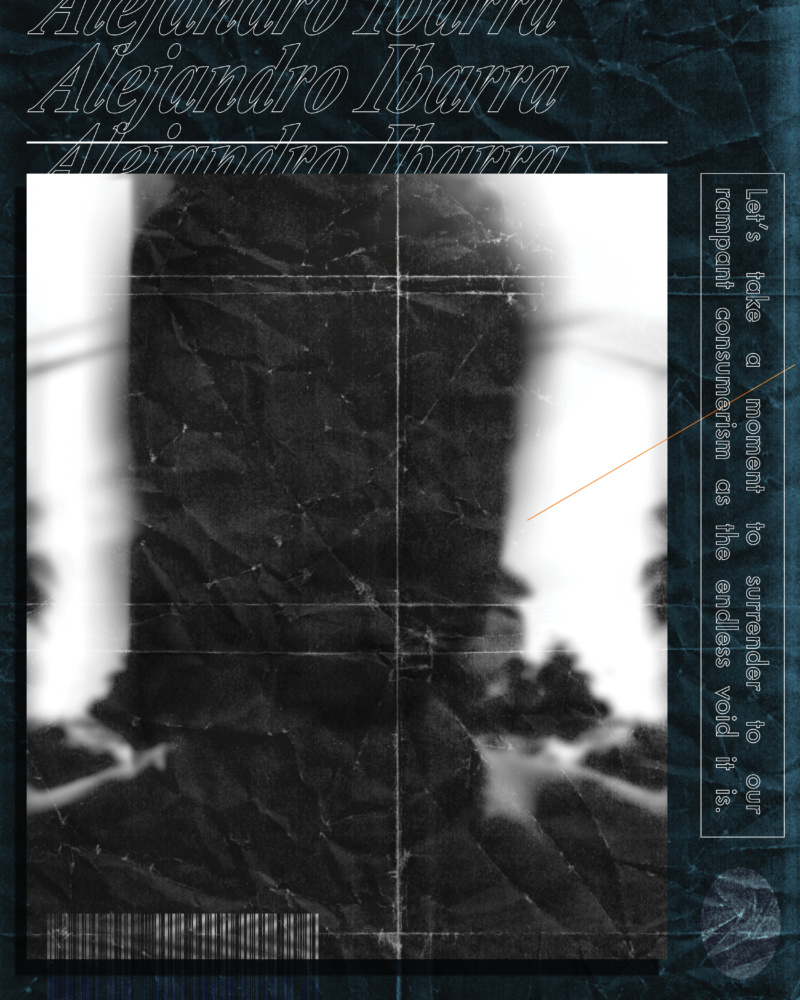
Alejandro Ibarra
How is technology changing the way we view art? Technology has made art more accessible both to consume and produce. This has effectively blurred the line between where art ends and technology begins. An example is the rise of digital art in which just about anything you can envision can come to life, or the use of code and robotics to create intricate paintings. The more we mix the two, the more we’re able to push boundaries.
How do you decide between creating art on a tech platform vs. a physical platform? I began making art by using technology as a tool to turn my ideas into something tangible. This way I could create entire worlds out of a blank screen—limitless possibilities. And like most digital artists, Photoshop was my weapon of choice. But in my development as an artist, I started to crave something more palpable. The best way I can explain it is that I wanted to get my hands dirty. We’re so overloaded with technology that I started to search for a more physical connection. That’s why I decided to set aside the tools I was so used to and began to explore porcelain and resin, amongst other media, in search of new ways to express myself. In the future, I would still like to find a path that joins together my physical art with technology in a way that feels organic.

Rabbithole
How important is the visual content of music videos in communicating a song’s meaning? For us, the visual is equally as important as the record. The right visual can help translate the core message of the song. When the two arts of music and film resonate together, the experience can be profound—taking you to another time and place. We can all remember a video that connected us to a piece of music. The first time you saw a Kraftwerk, Gorillaz or a Michael Jackson video and you were just blown away.
How would you like to be perceived by the industry and causal listeners as up-and-coming artists? Rabbithole is a collective and more importantly a group of friends that make music together. We always strive to create music that has integrity and is honest to who we are—and not who we are expected to be. We aren’t going to write “of the second” music just to make a fast buck. We’d rather make music that we can take a step back from and say “yeah that’s us” rather than churn out something disposable.
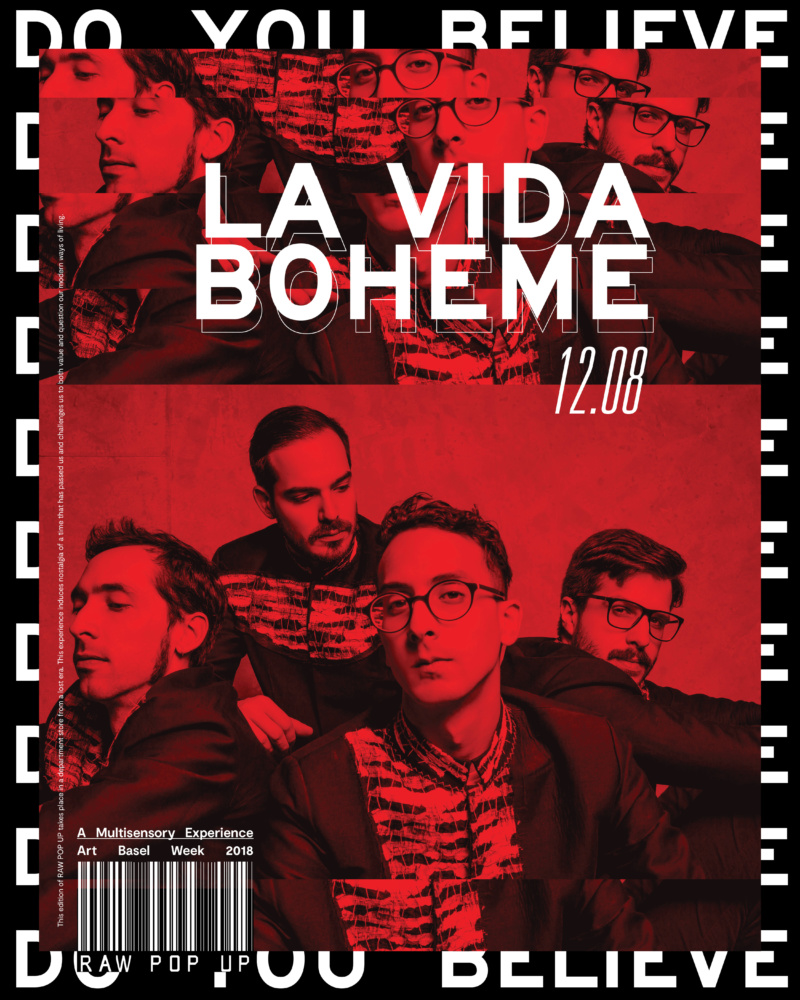
La Vida Boheme
How do you plan on mixing the featured art with your unique music at RAW POP UP? We are planing something unique for this concert. It is one of the first times we get to plan everything with the people of any pop up. RAW POP UP contacted us, and from the very beginning they let us know we were free to send ideas and concepts for the show—literally anything. So we are building something that we believe is going to surprise the visitors. We, and RAW POP UP, want it to be an experience.
What musical influences are important in shaping and creating your own sound? Everything from Bob Marley, The Clash, Chet Baker, Fela Kuti to salsa from Ruben Blades and Willie Colon. We literally love to hear music, any kind, and if we like it, we will introduce it somehow into our own sounds.
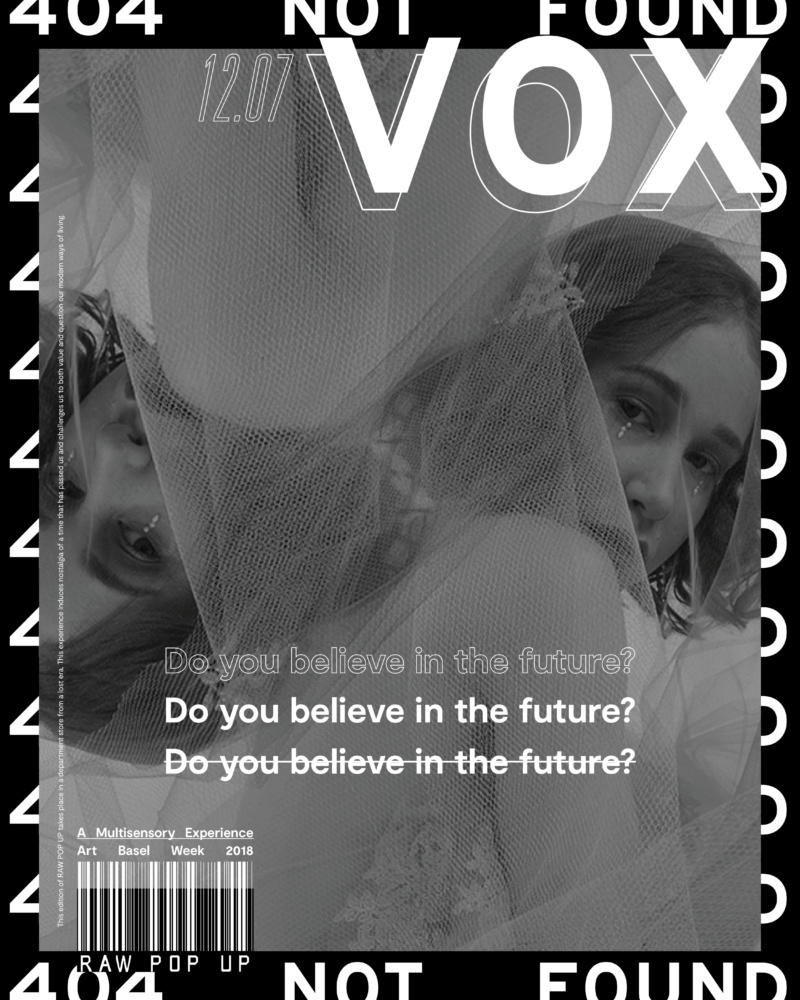
VŌX
How have art and music transformed your identity? I think the biggest transformation comes from a sense of purpose. I struggled a lot with depression and anxiety when I was younger, and music in many ways was my support system and my reason to keep living. Not just the music I had begun making but especially the music I was listening to. I felt less alone through these songs that were so vulnerable. I always hope that the art and music I’m making now can help other people who might be struggling as well.
As someone who grew up in a repressive home, how important is music as an instrument for self-representation? Very! I do think there’s a big problem societally in that we still expect the family to teach children emotional intelligence and communication. This should be taught in schools! Luckily I found poetry and songwriting when I was pretty young. This really was my only way of expression for many years.
What is the symbolic meaning behind the veils you wear during sets? I love visual expression! I like to be veiled for a few reasons. Historically veils have been used to cover important objects and people. There’s something very special about the dichotomy of being on display and at the same time being shrouded.
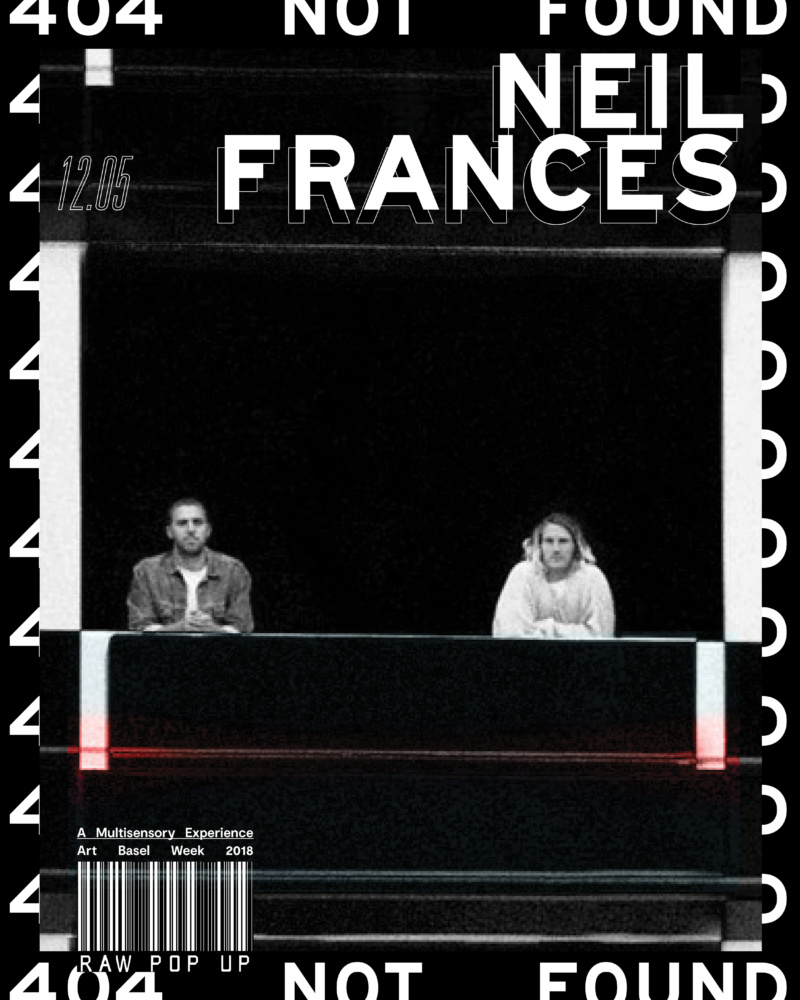
Neil Frances
What influences your sound selection when producing beats? Our studio setup is a huge influence on our sound. We have a gear-heavy studio in a small space near downtown LA, some old and some new so that plays a big role in our sound selection. We like to use the drum set to make beats but also use old analog drum machines. We also limit ourselves to what we have, we don’t have many software synths. We tend to find that we’re more inclined to be creative when our options are limited.
What artists or cultures influenced your art? DJ Koze, the Bee Gees, Tom Tom Club, Jeanette, Unknown Mortal Orchestra.
RAW POP UP x Cultured | December 5-9 from Cultured Magazine on Vimeo.










 in your life?
in your life?

